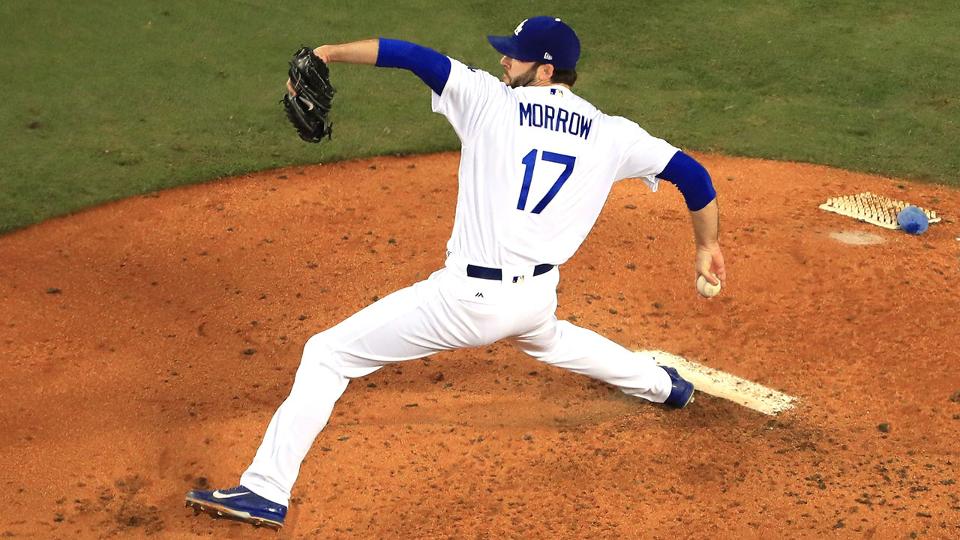Brandon Morrow is the Joe DiMaggio of a lonely-eyed Dodger Nation.
On a regular basis, the heroic and beloved setup man of the 2017 World Series run is the touchstone for beleaguered Dodger fans, who call out his name with equal parts anger and longing. How could the Dodgers not bring him back, and how will they ever succeed without him?
Let’s ignore that heading into the 2018 season, the Dodgers used the very strategy that brought them Morrow under the radar in 2017. Instead of splurging on big, multiyear contracts for set-up men (the way, say, the Colorado Rockies did, leading to the headline, “Rockies spent over $100M to have the worst bullpen in MLB“), Los Angeles again sought a higher quantity of modestly priced arms that might be primed for a step forward in relief.
Let’s ignore that some say the Dodgers could have spent the money on Morrow, matching the $21 million commitment ($9 million for the 2018 season, the rest to come) made by the Chicago Cubs to a pitcher turning 34 this year, and still employed the above strategy – either by moving other players out of the organization to avoid epic luxury tax penalties, or by saying to heck with those penalties. After all, Morrow wouldn’t have been the first pitcher the Dodgers have given an eight-figure promise to despite concerns that he might crumble.
Feel free to focus that the Dodger bullpen, while better than people might realize, is less than they have hoped for.
The fact remains that Morrow, who has a 1.47 ERA and 1.08 WHIP among other sterling statistics, is on the disabled list for the second time this year. He hasn’t pitched since July 15, and in a story written by Tim Bannon of the Chicago Tribune 10 days later, hadn’t even gotten on a mound yet.
“I’m not coming off the DL on Saturday, Morrow said. “I’m hoping to pick up a baseball by then. I haven’t been throwing.
“There’s a little bit of soreness. But it’s going in the right direction. Each day has been better.”
Morrow was placed on the disabled list on July 19 with right biceps inflammation. He was also on the DL in June with a lower back problem.
“It’s a fraction of what it was,” said Morrow, who continues to spend time in the trainer’s room trying to reduce the inflammation.
These might all be bumps in the road for Morrow and the Cubs, and the worst-case scenario, in which Morrow throws the final pitch that ends the Dodgers’ 2018 season, is still very much in play. And the Dodgers are still looking for more reliability between their starting pitchers and Kenley Jansen.
But I think it’s fair to say that right now, there’s little sense in shouting “Brandon Morrow” into the wind. If he were a Dodger in 2018, it’s more than likely that the state of their bullpen would be the same today as it is without him — not to mention the further burdens of sunk costs or not having explored and developed alternatives to him sooner.
Would you offer $21 million for two years of Brandon Morrow now? Maybe the answer is still yes, but it certainly comes with far fewer assurances for October relevance than people seem to think.





Comments are closed.